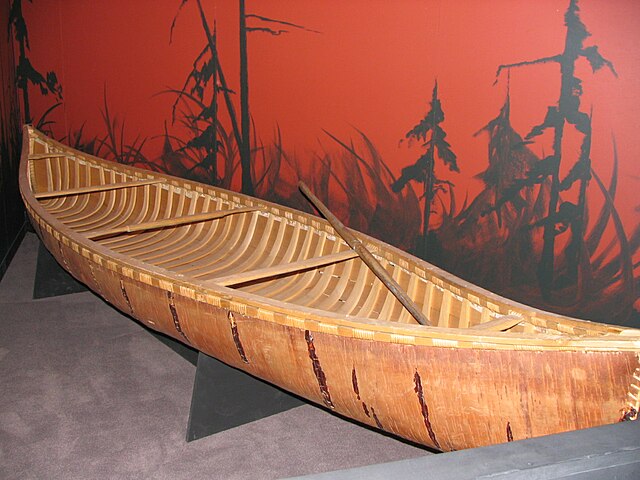The Canadian silver dollar was first issued by the Royal Canadian Mint in 1935 to commemorate the Silver Jubilee of King George V. The coin's reverse design was sculpted by Emanuel Hahn and portrays a voyageur and a person of Indigenous descent paddling a birch-bark canoe. The faint lines in the background represent the Northern Lights. The voyageur design was used on the dollar until 1986. It was then replaced with the 1987 Canadian 1-dollar coin. 1967 marked the end of the silver dollar as a business strike, or a coin issued for circulation. After 1967, the dollar coin was made of nickel, except for non-circulating commemorative issues for the collector market, which continue to contain silver.
The three strikes of the 1911 silver dollar on display at the Bank of Canada Museum: the lead trial strike (left), the "Emperor of Canadian Coins" (centre), and the loan from the Royal Mint Museum (right).
A canoe is a lightweight narrow water vessel, typically pointed at both ends and open on top, propelled by one or more seated or kneeling paddlers facing the direction of travel and using paddles.
Birch bark canoe, Ilnu Museum in Mashteuiatsh, Quebec, Canada
A B.N. Morris Canoe Company wood-and-canvas canoe built approximately 1912
Birch bark canoe at Abbe Museum in Bar Harbor, Maine
Bark canoe in Australia, Howitt 1904





